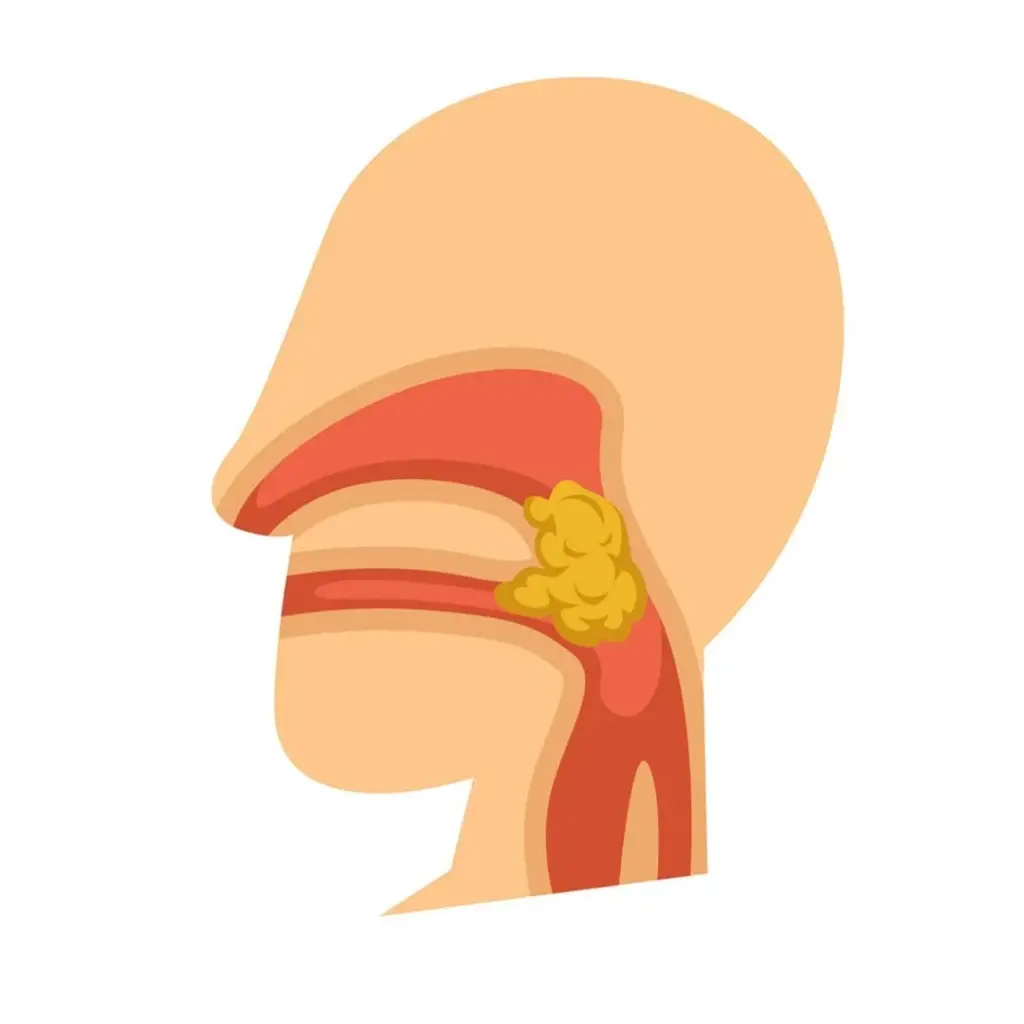Larynx Cancer
Overview
Laryngeal cancer affects your larynx, part of your throat. Your larynx helps you speak, breathe and swallow. It contains your vocal cords.Cancer affecting your larynx or vocal cords happens when cells grow uncontrollably in your larynx. As these cancerous (malignant) cells multiply, they invade tissues and damage your body.
Laryngeal cancer can form in any of the three main parts of your larynx:
Supraglottis (upper part) : More than one in three laryngeal cancers (35%) start here.
Glottis (middle part) : More than half of laryngeal cancers (60%) start here, where your vocal cords are.
Subglottis (lower part) : About 5% of laryngeal cancers — 1 in 20 — start here.

Which treatment you’ll have for your head and neck cancer depends on many factors. These might include the location of the cancer, its size and the type of cells involved. Your healthcare team also considers your overall health. Treatment options might include surgery, radiation therapy, chemotherapy and others.
Symptoms
Laryngeal cancer affects your larynx, part of your throat. Your larynx helps you speak, breathe and swallow. It contains your vocal cords. Cancer affecting your larynx or vocal cords happens when cells grow uncontrollably in your larynx. As these cancerous (malignant) cells multiply, they invade tissues and damage your body.
- Lump in your neck or throat.
- Trouble making voice sounds (dysphonia).
- Sore throat or cough that doesn’t improve.
- Voice changes, such as hoarseness, that don’t improve after two weeks.
- Breathing that’s noisy and high-pitched (stridor).
- The feeling that something’s in your throat (globus sensation).
Causes
Smoking or using other tobacco products greatly increases your risk of developing laryngeal cancer. Drinking alcohol, especially a lot of it (more than one drink daily) also raises your risk. And using alcohol and tobacco together increases your risk even more.
Other risk factors of laryngeal cancer include:
- Age : Laryngeal cancer happens more in people age 55 and older.
- Sex : Men and people assigned male at birth are about five times more likely to develop this cancer, possibly because smoking and heavy alcohol consumption happen more among this group.
- History of head and neck cancer : About 1 in 4 (25%) people who have had head and neck cancer will get it again.
What tests help diagnose laryngeal cancer
Diagnostic tests include:
Imaging scans: CT or MRI scans provide detailed images of the inside of your body. They can show a tumor’s size and where it’s located. A chest X-ray can show if cancer has spread to your lungs.
Laryngoscopy: During a laryngoscopy, a provider uses a thin, lighted tube called an endoscope to examine your larynx.
PET scan: During a PET scan, a provider injects a small, safe dose of a radioactive substance into your vein. The substance highlights areas with cancer cells.
Biopsy: During a biopsy, a provider removes a small piece of abnormal tissue from your larynx to examine under a microscope. A specialist called a pathologist will examine the cells and look for certain protein markers. Some types of cancer treatments only work on cancer cells with specific protein markers.
What are the stages of laryngeal cancer?
Part of a diagnosis involves staging the cancer. Your care team will figure out how severe the disease is — how far the tumor has grown and if and where it has invaded tissues in your body.
Stages of laryngeal cancer include:
- Early laryngeal cancer: In stages 0, 1 and 2, the tumor is small. Cancer hasn’t spread beyond your larynx.
- Advanced laryngeal cancer: In stages 3 and 4, the tumor has grown larger. It’s affected your vocal cords or invaded your lymph nodes or other areas of your body.
Management and Treatment
What is the treatment for laryngeal cancer ?
Treatment for laryngeal cancer includes:
- Radiation therapy: Radiation oncologists deliver high-energy radiation beams to kill cancer cells. The radiation targets only the tumor to minimize damage to surrounding healthy tissue.
- Chemotherapy: Medical oncologists use medications to kill or slow the growth of cancer cells. People often get chemotherapy intravenously (through a vein). Chemo can cause side effects during treatment that a medical oncologist can help you manage.
- Immunotherapy: This treatment uses your immune system, your body’s natural defenses, to help fight cancer. Immunotherapy is also called biologic therapy.
- Targeted therapy: This treatment targets cancer cells with specific types of proteins, preventing the cells from multiplying
Your Health, Our Priority
Schedule a consultation with our specialists for expert care and guidance.
